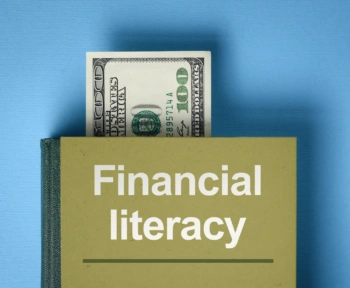Introduction
It has never been more critical to provide our kids with the information and skills they need to make wise money decisions in a confusing world. This blog will help parents teach kids money management early on. They will get the knowledge and confidence to manage their money. Join us on this life-changing tour to prepare your children for a secure and prosperous future.
Why Financial Literacy Matters
Money smarts isn’t just a cool word; it’s a useful life skill that will affect our kids’ future. It’s important to understand, handle, and make smart decisions about money because it’s so important to our daily lives. This is why it’s important to know about money:
Empowerment:
People who know how to handle their money can take charge of their own lives. It helps you trust yourself and get the information you need to make smart choices about planning, saving, investing, and in the future with plans.
Long-Term Security:
Learn about money when you’re young to keep your money safe over time. It can help you deal with hard times, save for retirement, and understand how the big world of money works.
Debt Management:
Since loans and credit are becoming more common, teaching kids about money matters helps them understand what it means to make money. It encourages smart buying, which lowers the risk of getting into too much debt.
Critical Life Decisions:
Knowing about money is very important when making big decisions in life, like getting a house, starting a business, or going to college. Making smart financial decisions can greatly affect how these projects turn out.
Economic Citizenship:
People who know a lot about money can be better able to participate in the business as a whole. They know their rights and duties as taxpayers, investors, and customers, which is good for economic growth.
Starting Young: The Foundation
The road to financial literacy starts when you teach your kids about money for the first time. Starting when they are young gives them a solid base to build their financial understanding and confidence. In this initial stage, these are the most important steps to think about:
Introduce Basic Concepts (Ages 3-5):
Money Awareness:
Help your child learn about money to begin with. Display coins and bills and explain their purpose and value. Knowing these simple things about money will help you understand more complex ideas about money in the future.
Saving and Spending:
Show your child how important it is to save money and spend it wisely. Show people how to save money over time with easy things like a piggy bank. Tell them to put away some of the money they get, like gifts or bills.
Money Management (Ages 6-10):
Allowance:
I think it’s best to provide your infant with a modest weekly or monthly allowance. This acquaints them with the notion of financial management. They will be responsible for deciding how to save, spend, and potentially divide their allowance.
Piggy Bank:
To uphold the piggy bank tradition, permit them to establish savings objectives. This might be for a brand-new item, a unique gift, or an event that people will remember. They will learn to be patient and understand the importance of delaying gratification.
Understanding Needs vs. Wants (Ages 11-13):
Differentiating Essentials:
The time has come to define “needs” instead of “wants.” Could you clarify that certain items, such as clothing and sustenance, are essential for preserving life? In contrast, others, such as electronic devices and toys, are discretionary.
Budgeting Basics:
Start talking about planning as a way to divide up money for different uses. Tell them to make a simple budget for their allowance, figuring out how much to spend, save, and put away for later.
Teenage Years: Building Skills
Because your kids are getting older, they should understand money better as they become teenagers. This time is very important for learning the money skills and facts that will help them for the rest of their lives. Here’s how to help them through these important years:
Bank Accounts and Savings (Ages 14-16):
Opening a Bank Account:
Please help your adolescent set up their initial bank account. They will gain an understanding of the banking system, account management, and the significance of maintaining transaction records through this experience.
Interest and Savings:
Analyse the notion of interest and the significance of compound interest. Advocate for the deposit of a proportionate amount of their earnings into a bank account. Their interest earnings increase in tandem with their deposits.
Earning and Budgeting (Ages 17-18):
Part-Time Jobs or Entrepreneurship:
Encourage your kid to get a part-time job, do an internship, or even look into starting their own business. Making money gives them real-life experience with handling money.
Creating a Budget:
You can make a more detailed budget with your kid by sitting together. This budget should include their goals for savings, income, and spending. Could you show them how to keep track of their spending and make changes to their budget as needed?
Preparing for Adulthood
Your kids should be ready to make smart financial decisions and find their way around the complicated world of money by the time they become adults. To make sure they are ready for the challenges and possibilities of adult money life, here are the next steps:
Credit and Debt (Ages 19-21):
Understanding Credit:
Describe what credit scores and credit records are and how they work. Stress the importance of using credit cards responsibly and the risks of taking on too much high-interest debt.
Responsible Borrowing:
Show them how important it is to borrow money responsibly. If they are considering getting student loans to pay for college, make sure they know the terms and consequences of getting student loans to pay for college, make sure they know what the terms and consequences are.
Investing Basics (Ages 22 and above):
Introduction to Investments:
Get your young people interested in investing. Talk about different spending methods, such as stocks, bonds, mutual funds, etc. Show them how buying can help their money grow over time.
Long-Term Financial Planning:
Stress how important it is to plan for your long-term finances. Tell them how important it is to start saving early and set financial goals like saving for retirement and paying for big events.
Teaching Methods
The process of teaching your kids about money can be fun and worthwhile. To make this trip as useful and fun as possible, think about using these ways to teach:
Lead by Example:
Financial Role Modeling:
Children frequently keep a watchful eye on their parents. Engage in candid conversations with your children about the smart financial choices you make to serve as a model. Disseminate your successes, failures, and experiences.
Involvement in Family Finances:
When appropriate, please include your offspring in family financial discussions and decisions. This may involve deliberating on saving to save for a large purchase or creating a budget for family vacations.
Interactive Learning:
Games and Apps:
Employ applications and diversions designed with the explicit purpose of educating financial concepts. Numerous of these instruments make money education enjoyable and interactive. Fintech applications and games such as “Monopoly” can serve as excellent launching points.
Real-Life Scenarios:
Construct practical situations that require your children to handle money. This may entail assigning them a modest budget to organise a family excursion or requiring them to compute grocery expenses and conduct price comparisons.
Financial Literacy Courses:
Enroll in Age-Appropriate Courses:
Find classes that teach your child about money that are right for their age and level of understanding. There are a lot of community centres, schools, and websites that offer classes for kids and teens.
Interactive Classes:
Pick classes that get you involved and push you to take part. Some of these are group projects, discussions, and tasks that help students learn more.
Conclusion
Money knowledge is crucial in today’s fast-paced environment. Your youngsters will get the skills and confidence to handle money’s complexities with this information. Education alters them from basic concepts to loans and investments. It prepares them for financial success.
Remember that teaching your kids about money isn’t just about numbers; it’s also about giving them the tools they need to make smart decisions and protect their financial well-being. As they become adults, their lessons will help them navigate the financial challenges and chances of life.
Start this process of learning about money with your kids. It’s an investment in their future, and you’ll see them do well as financially smart adults. Start right now and teach them how to handle their money well.





